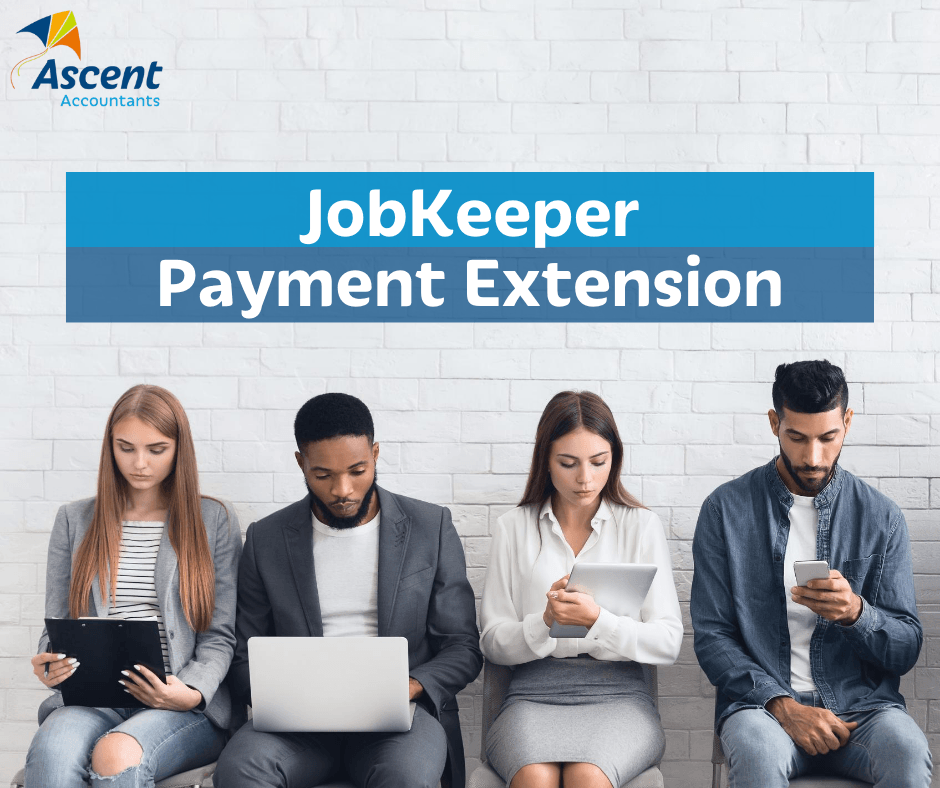JobKeeper Payment Extension

Overview:
TurWith the latest announcement and updates to the JobKeeper payments, you are able to enrol in the program any time until the payments end, which will be March 28th 2021. The payments announced originally will continue until September 27th 2020, which allows you to pay eligible employees $1,500 per fortnight (pre-tax). However, there are now 2 extensions to the original scheme that once legislated, will take effect from September 28th, 2020 to March 28th, 2021.
There has also been updates to employee eligibility. Eligible employees can now be nominated by a new employer if their original employment with JobKeeper ended before July 1st, 2020. Further from this, as of August 3rd, 2020, the assessment of employee eligibility is judged from July 1st, as opposed to the initially stated date of March 1st, 2020.
As of September 28th 2020, once the extension takes place, businesses require the same decrease in GST turnover to be eligible. This means a 30% loss for businesses turning over less than $1 billion, 50% for businesses turning over more than $1 billion, and 15% for any ACNC-registered charities other than universities and schools.
With the extensions, there will be two separate tiers and two different application and assessment dates.ning your business into an incorporated small business compared to a sole tradership is really great when it comes to personal asset protection. In a properly structured and managed incorporation, owners should have much more limited liability for business debts and obligations. This does also mean that more formalities and paperwork are required, but it is well worth it to ensure that should anything go wrong, your personal assets aren’t at risk. If your business is starting to grow, then this is a really important factor to consider.
2 Tiers:
There are two different tiers, and employers and businesses will need to nominate the rate they are claiming for their eligible employees and/or eligible business participants.
Tier 1:
This rate applies to eligible employees who were working 20 hours or more on average per week in the 4 weeks before either March 1st, 2020 or July 1st, 2020. Eligible business participants who were actively engaged in the business for 20 hours or more on average per week are the same.
Tier 2:
This rate applies to other eligible employees and business participants.
Extensions:
Extension 1:
Extension 1 will commence on September 28th, 2020 and continue until January 3rd, 2021. As a small business, you will need to be able to show that your GST turnover has fallen at least 30% in the September 2020 quarter (July, August, September), relative to a comparable period, which is usually the corresponding quarter in 2019.
During this first extension, the rate for tier 1 will be $1,200 fortnightly, and Tier 2 will be $750 fortnightly.
Extension 2:
Extension 2 will commence on January 4th, 2021 and will continue until March 28th, 2021. Much like the first extension, you will need to be able to show that your GST turnover has fallen at least 30% in the December 2020 quarter (October, November, December 2019).
During this second extension, the rate for tier 1 will be $1,000 fortnightly, and Tier 2 will be $650 fortnightly.
Key Dates:
Original JobKeeper Ends: 28/09/2020
JobKeeper Extension 1: 28/09/2020 – 03/01/2021
JobKeeper Extension 2: 04/01/2021 – 28/03/2021
Please feel free to contact us any time should you have any questions, need further clarification or help in any regard.
Need help with your accounting?








